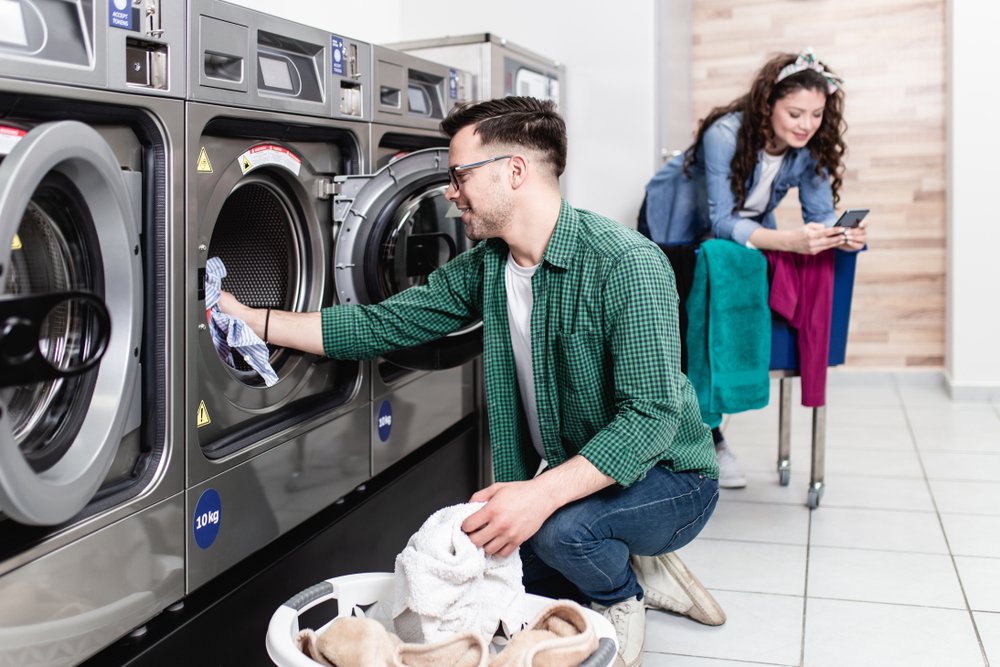Laundry Income per Unit: How Much Money Can You Make from Laundry Machines?
Do you have spare space in your multi-family housing or commercial residential building that you could turn into an on-site laundry for your tenants?
Perhaps you are a laundromat owner already, but you are thinking about expanding or replacing equipment due to underperformance.
Either way, you’re probably wondering about coin laundry profit margins.
While there are many variables that may impact your overall laundry business profits, let’s take a look at how much laundry income per unit you should be making.
Is a Coin Laundry Business Profitable?
The simple answer is yes. For many owners and operators, a laundry business can be (and usually is) very profitable.
However, much like with any business, a coin laundry’s profit margins depend on things like:
location
pricing
market share
expenses
If you have a coin laundry room in a residential building that is mostly empty, you are likely to be less profitable than if your building is full. Likewise, if your laundry room is poorly maintained with out-of-order equipment, your commercial laundry probably won’t fare too well.
But in the right location, with the best equipment (including the proper number of washers and dryers to meet your tenant’s needs), a coin laundry business can yield a great return on investment.
While we discuss owning and operating a laundromat business more in our blog, here we want to look at the residential laundry business owner. These are folks who run an on-site laundry room for their tenants.
Renting Well explains that “On-site laundry is a convenience for existing and future tenants, and should be considered a feature when marketing the property and when you’re considering investing in one. Laundry facilities count as one of the most popular amenities renters look for, so adding one to your property is generally considered a positive long-term investment.”
How Much Money Can You Make from Laundry Machines?
There are several key factors you need to consider when determining how much earning potential you may have from your building’s laundry room.
First, you’ll want to decide how many washers and dryers you’ll need.
How many tenants are in your building and what is their profile?
The Multi-Housing Laundry Association recommends that you have one washer/dryer paid for every 8 rental units if your building serves primarily families, but those figures change depending on demographics. They also add that you should have “one energy-efficient, single-load dryer for each washer. When more than one dryer is required, stacked dryers may be used. Double load dryers are less energy-efficient and may slow the laundry completion process when used to dry less than a double wash load.”
What are your average costs for running a laundry room?
Consider the energy, water, and gas utility bills you’ll need to pay for your laundry room. Washing machines can use 14-20 gallons of water per load, and some consume more energy than others. While studies show that multi-housing laundry rooms are more efficient than in-unit laundry equipment, those utility expenses will impact your coin laundry profit margin.
It’s important to note, though, that there are tax benefits that may offset some of these costs. Buildium explains “Your utility bills and your regular maintenance and repair expenses will go up with a laundry facility, but that also means you’ll have more to write off at tax time. Or if tenants pay for their utilities, they naturally will absorb the higher costs. Also, there are also often tax credits for buying energy-efficient appliances, which suppliers or your accountant can help you with.”
From there, it becomes possible to start setting your prices. You’ll want to set your per-load price high enough to cover expenses, but low enough to encourage your tenants to use your machines.
This way, you can ensure positive cash flow and increase your laundry business profit margin.
Use SelfOp’s Laundry Business Revenue Calculator
Still unsure exactly what your coin laundry business profits will look like?
With all of these variables, and because you can set your own pricing, it’s a bit tricky to calculate exactly how much your laundry income per unit will be. That’s why we created a Laundry Business Revenue Calculator.
Here, you can pinpoint how much you could be making, and whether it’s worth it to set up your self-operated laundry service today.


